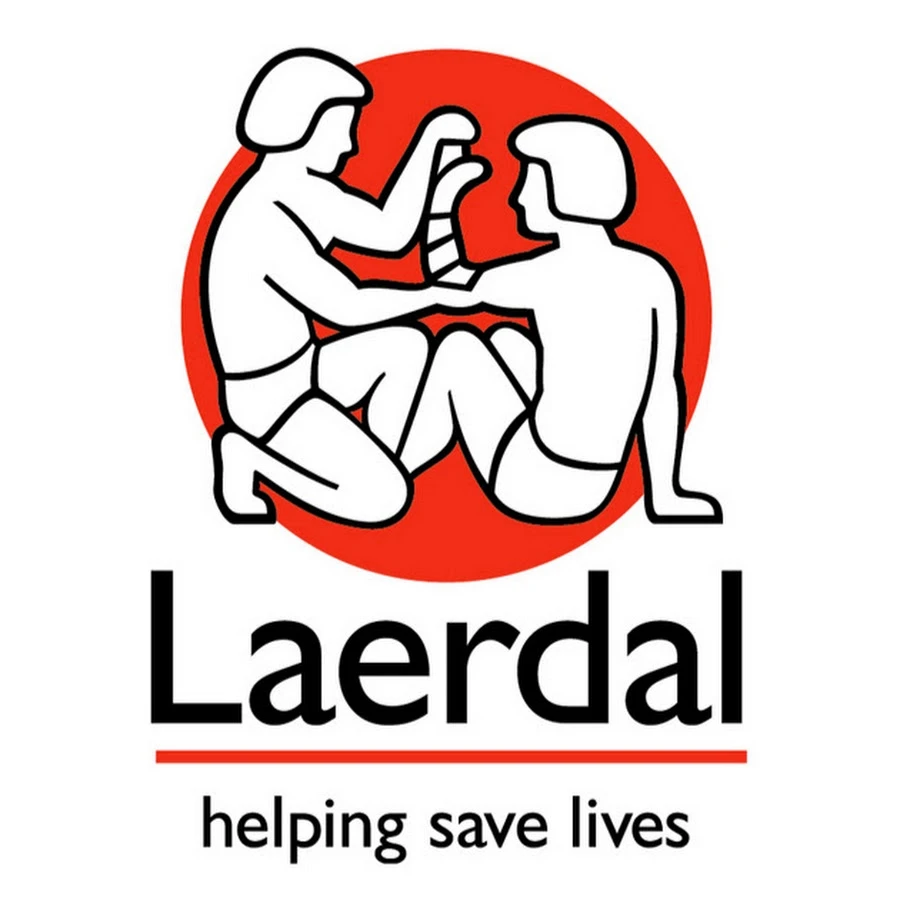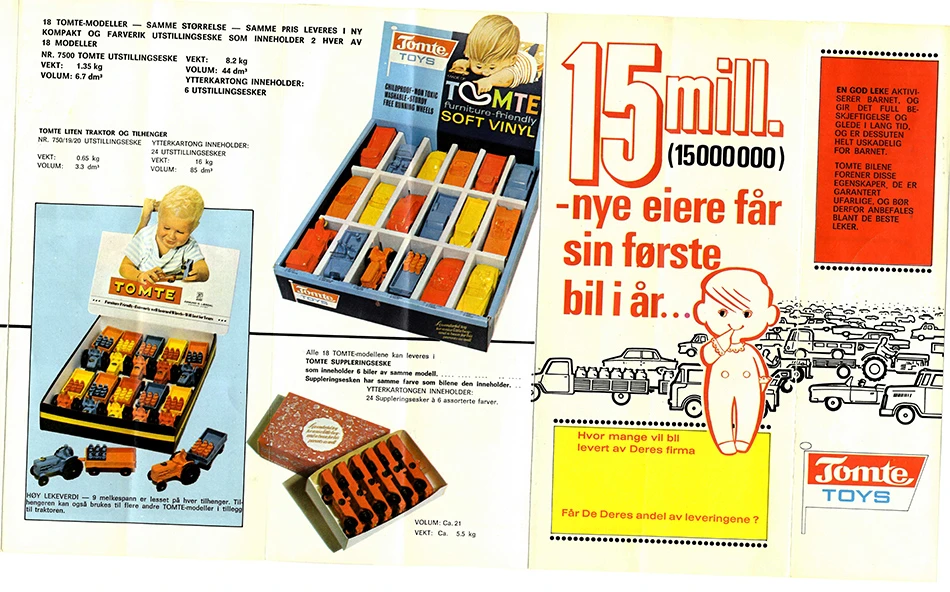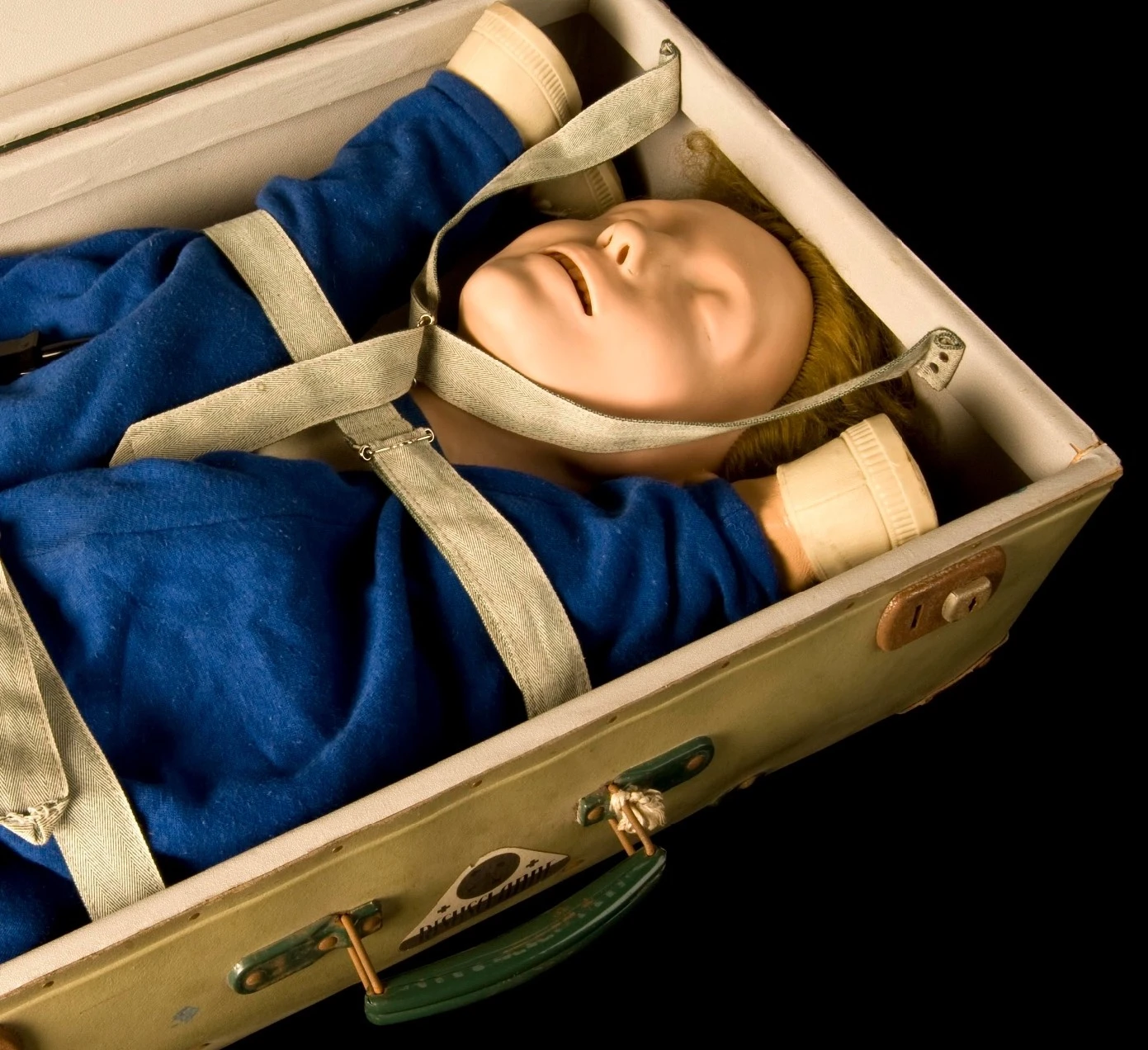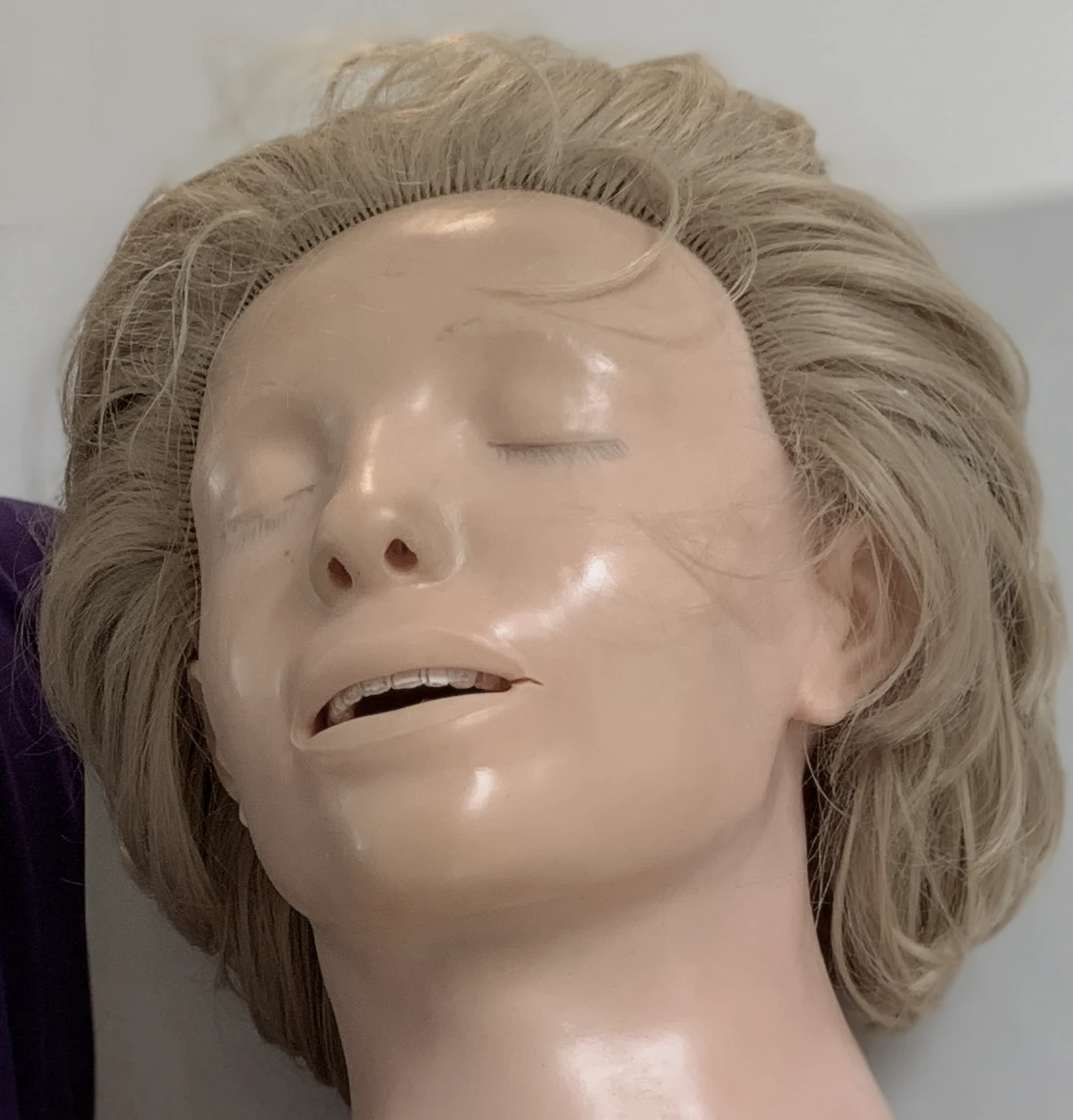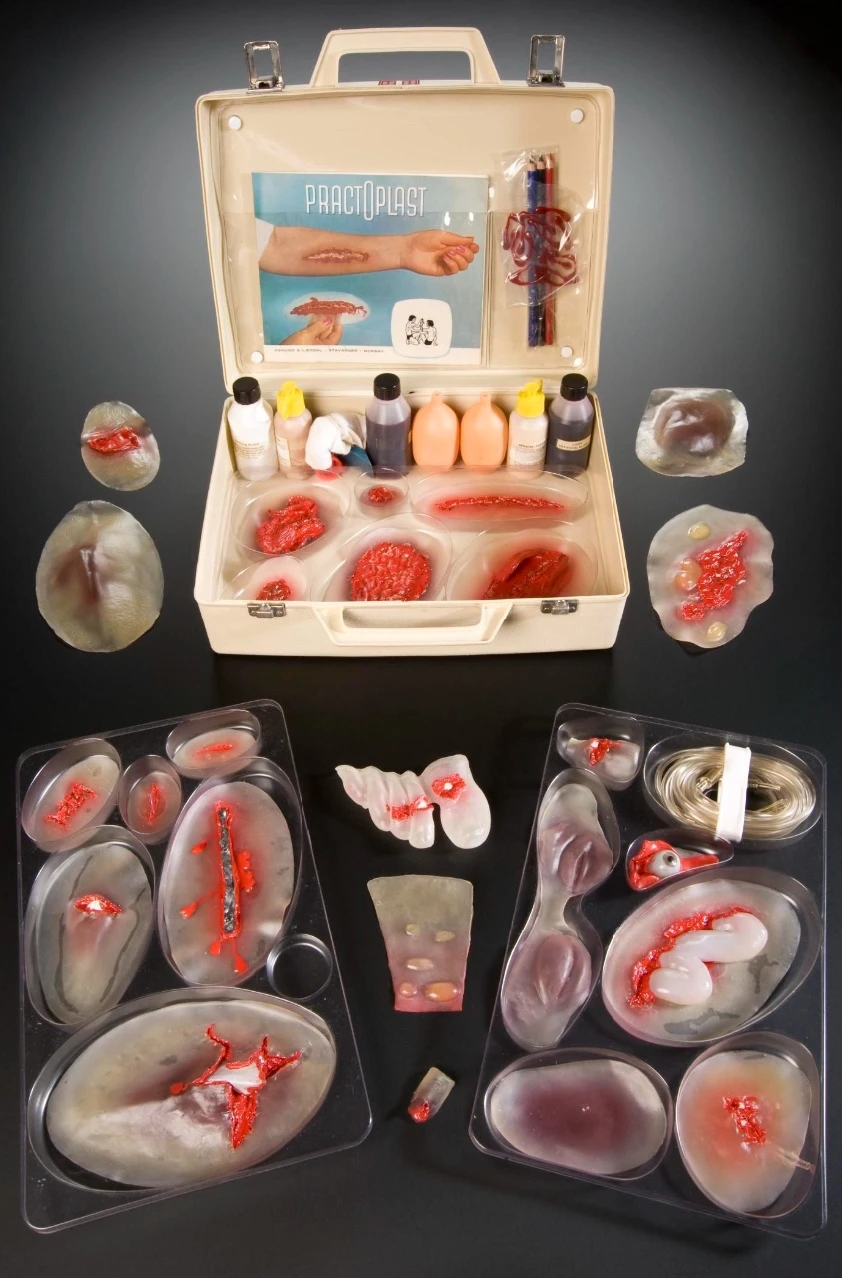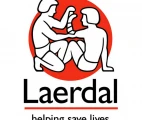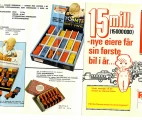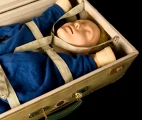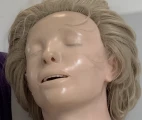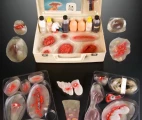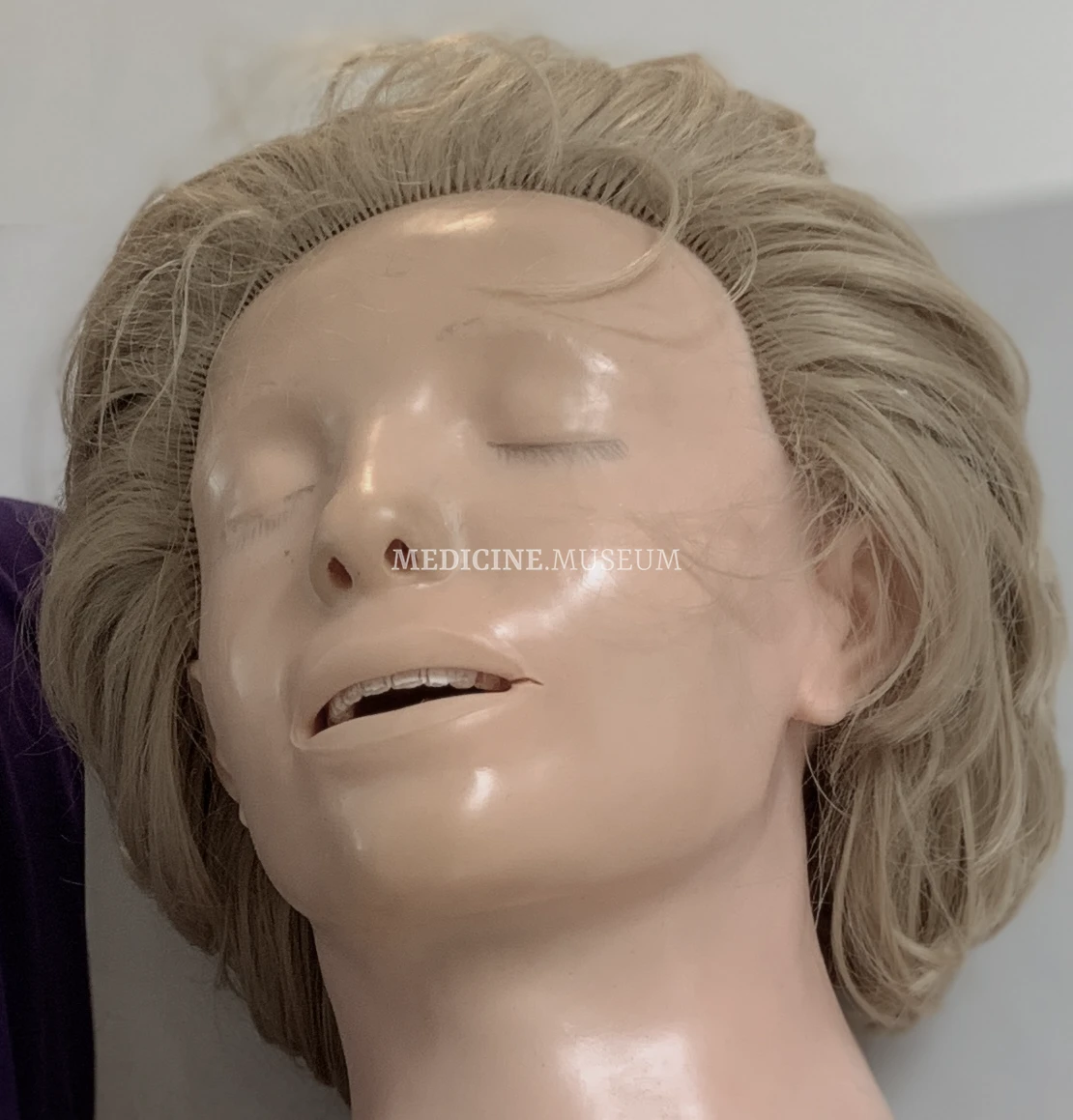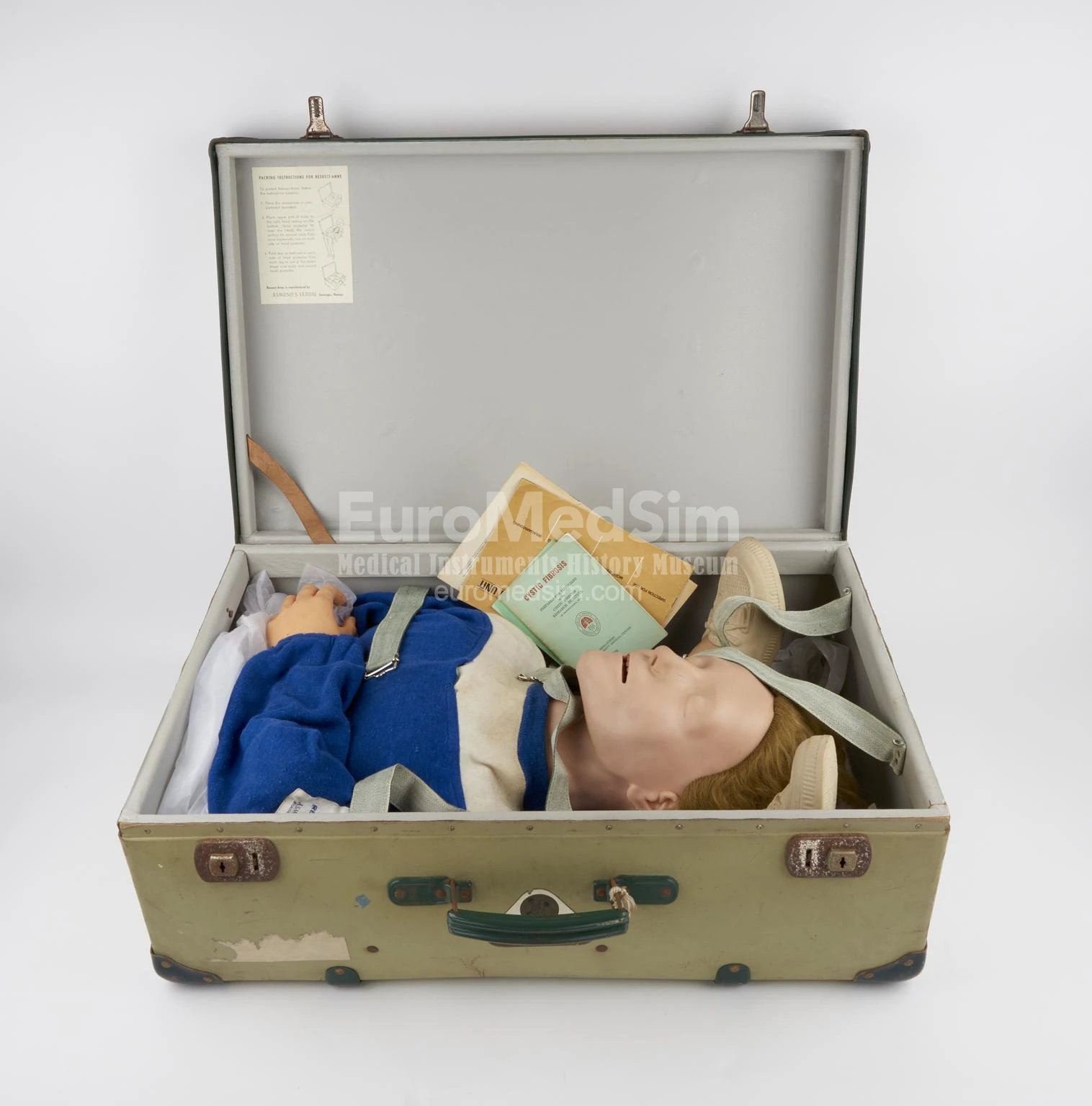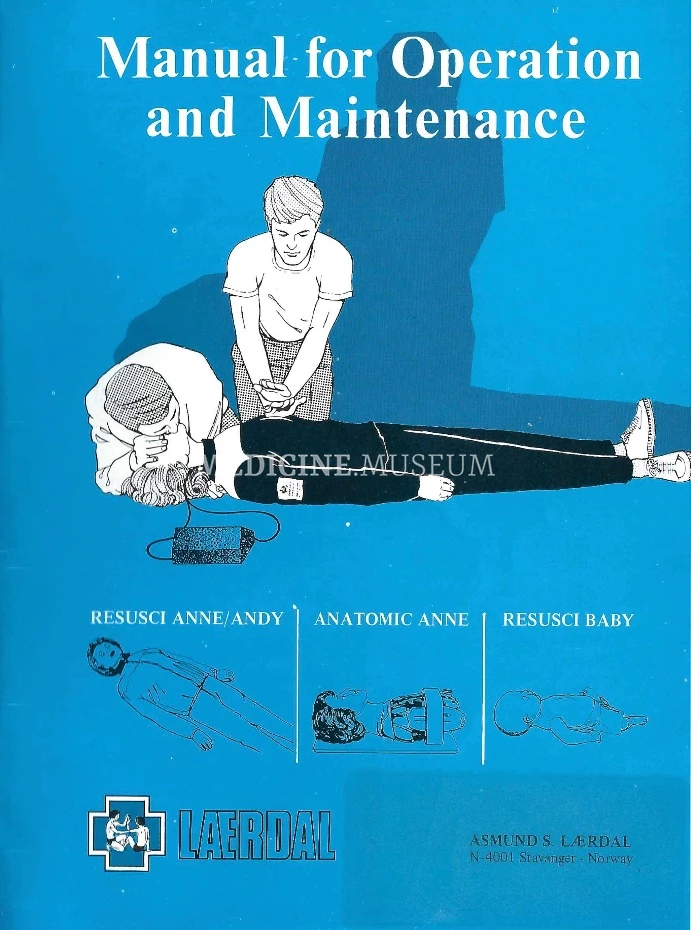Laerdal Medical AS
World Importance
In the annals of medical education history, few organisations have made an impact as profound as this company. Laerdal is the company that made medical education different. Instead of 'see one, do one, teach one' today future medical doctors 'learn, do, improve, repeat' – and all this without harming the real patients! This company is not just the birthplace of the Resusci Anne cardiopulmonary resuscitation manikin used around the world - it is the birthplace of multiple, standardized, consistent, practice-based simulation (simulation, modelling) medical training. With no animal casualties, with no risk to humans.
Foundation and early years of Laerdal
The firm Laerdal was founded in 1940 by Åsmund S. Lærdal as a children's publisher and toy-maker in a small town of Stavanger, Norway. Initially focused on greeting cards and kid's books with the mission of "creating children's joy". In 1943, he began making toys under the name 'Tomte Småvareindustri' (Tomte is a name of a mythological creature, kind of gnome or home elf in a long red hut, being a guardian spirit of the home and farmstead).
In 1949, Åsmund Lærdal returned from the United States with knowledge of flexible plastic (PVC). First made of wood, now, after his own numerous experiments, the toy-cars were manufactured of soft plastics and did not damage the sofas or cupboards during the boy's by racings – they were "furniture friendly" cars – this feature was important for the families in the post-war world. Experimented with this new material to manufacture toys, revolutionising the toy industry. The Tomte cars production continued until 1978, reached unbelievable number of 100 million pieces sold in 100 countries.
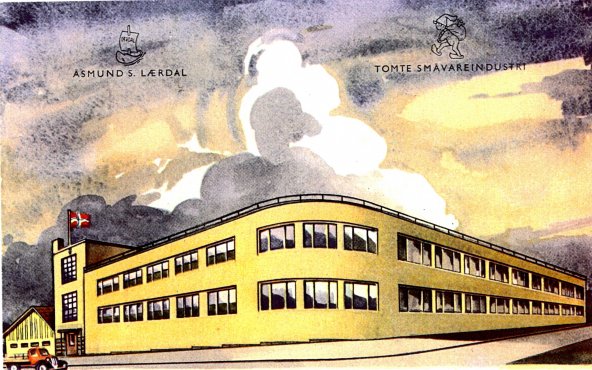
Laerdal factory in Stavanger, Norway, 1948. Source: plastbilar.se/tomte-other.html
The Anne became another company's bestseller, a runaway success across Europe. But the first steps were not easy. Using an old kneading machine from a bakery and a rotating device modified with bicycle rims and chains, the first doll was made in 1950. A shoemaker's sewing machine was used to attache hair to the doll's head. And the material was the biggest challenge - the first batch of 900 dolls suddenly changed their face skin color to blue. However, after several fails the result become perfect. It was a wonderful blonde-haired doll with eyelids of the blue eyes drooped if the doll was put to sleep, lush eyelashes, nice soft skin.
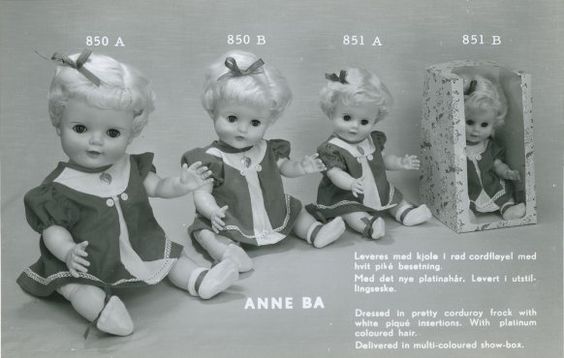
Early Anne dolls by Tomte, Stavanger, Norway. Source: vestadmin.no
Where comes the name Anne from?
You may ask, where comes the name 'Anne' from? A daughter of the master? (No, Åsmund and his wife, Margit, had previously lost their first child in a neonatal hospital epidemic, but she was Signe Marie). Most probably it was his marketing genius to pick up this name in the year when The Princess Anne was born, the second child and only daughter of Queen Elizabeth II and Prince Philip, Duke of Edinburgh (August 15, 1950). In 1954 no competitor existed – 6 years later there were over 50 of them but Laerdal's Tomte doll was still the world leader – he exported this Norwegian Wonder Baby to over 65 countries.
Shift to medical training products
Since the company was already well known in Norway as a manufacturer of high quality plastic products of various colors and shapes (the famous Tomte Cars), the Civil Defence asked them in 1953 if it possible to create attachable wound moulages. Realistic injuries on the simulated casualties during trainings had a powerful emotional impact on the participants, which increased the effectiveness of the drills. However, at that time, makeup, crayons and plasticine were almost the only tools in the hands of instructors.
After a personal request, the doctors at the emergency room of Oslo Emergency Hospital agreed to set up a movie camera with color film and film the most interesting and characteristic cases. Based on these newsreels, a set of 33 moulages of wounds, burns, injuries, made of soft plastic that could stick to the skin, was created. This set, called Practoplast, although not the first in the world, but was widely recognized, was produced with some modifications to this day, exported to Europe, America, Asia and Africa.
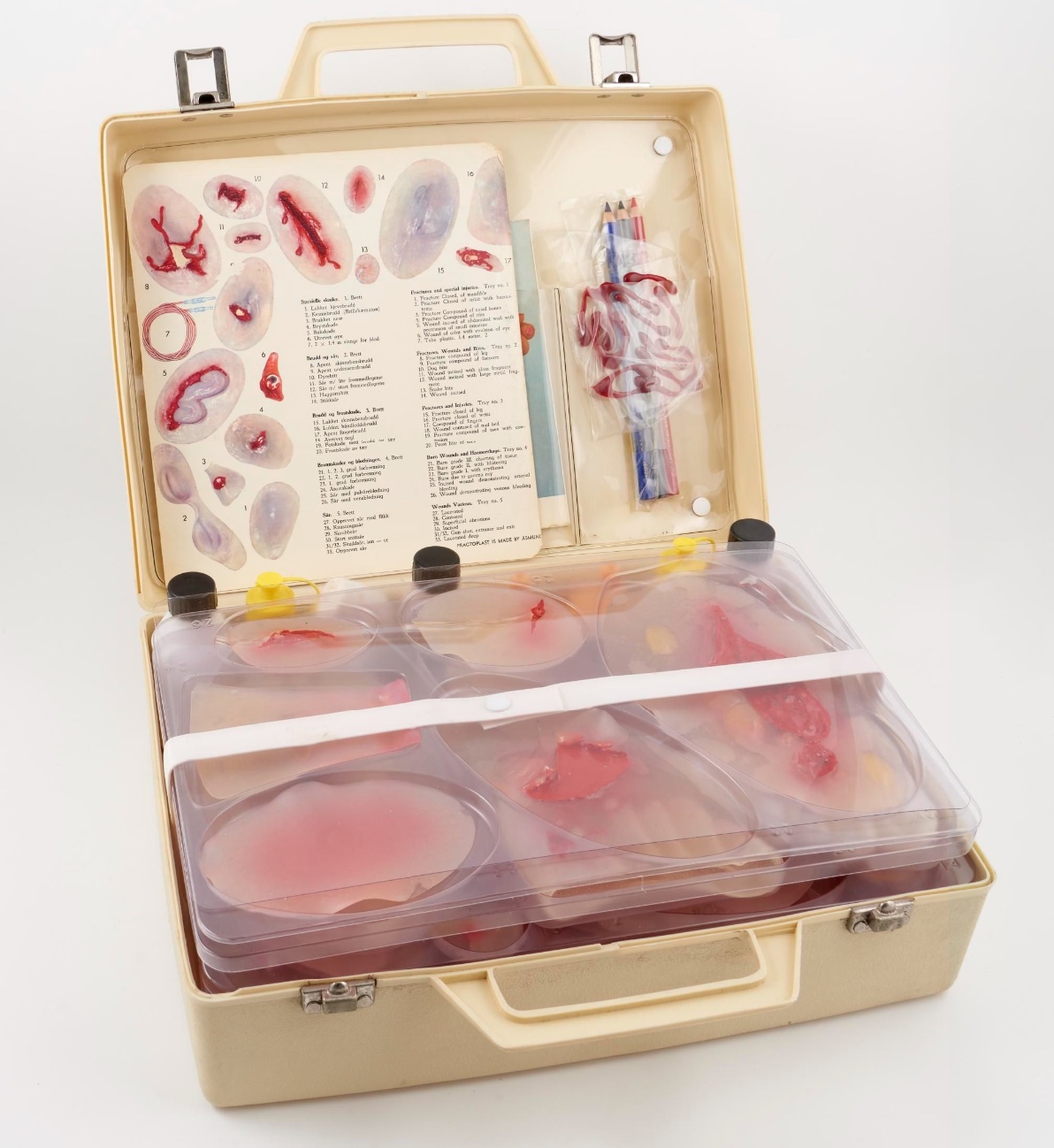
Set of wounds Practoplast ca 1950-1960, by Laerdal, Stavanger, Norway. Collection of the Science Museum, London. Source: collection.sciencemuseumgroup.org.uk
Resuscitation
Having earned a good reputation in medical circles, Laerdal soon received a new request. In 1958, while discussing the prospects of using Practoplast with Dr. Per Strömbäck, the head of the Swedish Red Cross, the conversation turned to a new method of artificial respiration proposed by American doctors. The Norwegian entrepreneur was so interested in the method that he tried it on his wife and son, but both were not happy about it. Meanwhile, in August 1958, the Scandinavian Conference of Anaesthesiologists was held in Gausdal, Norway, where Peter Safar – an anaesthesiologist from Baltimore, the founder of the method – presented the technique for the first time in Europe. One of the participants was the only anaesthesiologist from Stavanger at the time, Dr. Bjørn Lind, and he became Laerdal's consultant for the creation of the CPR training manikin. It took almost two years to develop the prototype and in May 1960, Asmund Laerdal visited USA where he succeeded to present the model to the leading American physicians, among them Peter Safar, James O. Elam, Archer S. Gordon (however, Dr. Safar claims "in 1959, Asmund Laerdal and Hans Dahll of New York visited the American Red Cross and Safar at Baltimore City Hospital, with a developmental model of the mouth-to-mouth manikin", and Dr. Gordon in his A Death Mask to Save Lives (The Story of Resusci-Anne)mentioned that at the first time the manikin's presentation happened in winter 1960).
Global activity
The American Heart Association (AHA) in 1974 first published their standards for practising and teaching resuscitation, as a supplement to the Journal of the American Medical Association (JAMA) – these "JAMA guidelines", and a series of later updates, were distributed in millions of copies throughout the world. This action would never happened without active organisational and financial support of Laerdal.
SAFER
SAFER - Stavanger Acute Medicine Foundation for Education and Research – is a foundation and learning center established in collaboration between Stavanger University Hospital, the University of Stavanger and Laerdal Medical AS. It was established in 2006. This foundation operates as a learning and simulation center in Stavanger, Norway, and focuses on enhancing training and patient safety for healthcare professionals. The purpose of the center is to strengthen emergency medical training and patient safety, primarily by stimulating competence development of relevant personnel at the three initiators. The center will also conduct research and develop course offerings. SAFER is part of an active network collaboration with internationally leading medical simulation centers. Located at Seehusens gate 1, 4024 Stavanger, Norway.
Important dates and facts about Laerdal
1940. Foundation of Laerdal by Åsmund S. Lærdal as publishing and toy-making company in Stavanger, Norway.
1949. Introduction of the plastic Tomte toy-cars.
1950. The blonde-hair, blue-eyes and soft-skin doll Anne was presented to the excited kids.
1953. The kit of injuries and wound moulages Practoplast was developed.
1960, May. The first prototype of CPR-manikin, Resusci Anne was presented to the specialists in Baltimore.
1971. The Recording Resusci Anne, equipped with a printer for instant feedback was launched.
1974. JAMA guidelines for practising and teaching resuscitation published by the American Heart Association (AHA) supported by Laerdal.
1978. The toy business sold out. Laerdal company is now focused entirely on life-saving products.
1979. The Laerdal Foundation for Acute Medicine to support research and educational initiatives is founded.
1980. The Laerdal Foundation for Acute Medicine was established to support researches in acute cases health care.
2009. The high-fidelity patient simulator SimMan 3G was introduced to the market.
2010. The not-for-profit company Laerdal Global Health AS was established as a sister-organisation to Laerdal Medical AS.
2019. Acquisition of the B-Line Medical (based in Washington DC, founded in 2005), a debriefing and training management platform company.
2020. The SimMan 3G PLUS with lot of innovative functionalities was presented.
2024. MamaAnne, the maternal and birthing simulator was launched.
Addresses
Åsmund S. Lærdal AS
- Åsmund S. Lærdal AS. PO Box 377, N-4001 Stavanger, Norway (1970s)
- Tanke Svilands Gate 30, 4007 Stavanger, Norway (today)
Laerdal Medical Corp.
- 1 Labriola Court, Armonk, NY 10504, USA
- 167 Myers Corners Road, P.O. Box 1840, Wappingers Falls, New York 12590, USA
References
- Tjomsland, Nina. From Stavanger with Care: Laerdals first 50 Years. Printed by: Aase Grafiske A/S, Stavanger – Norway, ca. 1990
- Safar, Peter. In Memoriam ASMUND S. LAERDAL. October 11, 1913 - November 19, 1981. November, 1981
- Gordon, Archer S. A Death Mask to Help Save Lives (The Story of Resusci-Anne). Online: forensicgenealogy.info/images/archer-gordon-story-of-resusci-anne.pdf
Conclusion
Over the next 60 years, Laerdal developed a range of resuscitation training manikins and other medical simulation solutions. Today, as of 2024, Laerdal is a multinational company with over 2,000 employees in 26 countries. Continues to be a leader in healthcare simulation and resuscitation training products. Maintains its headquarters in Stavanger, Norway, while operating globally. Developed a dual business model with Laerdal Medical AS (profit-oriented) and Laerdal Global Health AS (focused on developing countries). Throughout its history, Laerdal has transformed from a children's book and toy company to a global leader in medical simulation and training, driven by a commitment to saving lives and improving healthcare education.
Conflict of Interests
The author declares that there is no conflict of interest: This article is written without support from the company or its affiliated organizations and does not pursue any commercial interests for the author, who is only admiring the people who make life of human beings better.
